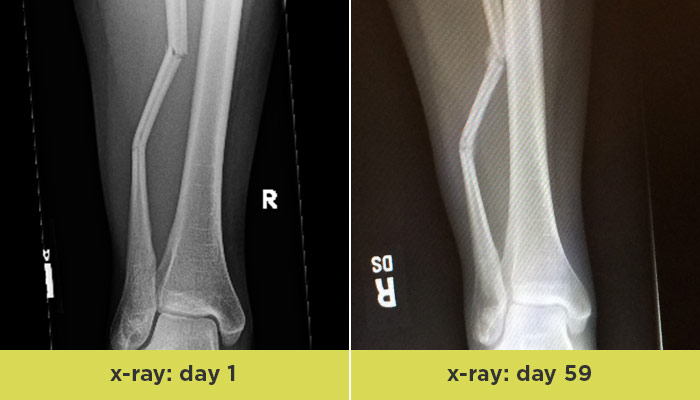Ongoing Onboarding: How Duolingo Introduces New Skills
Continue to Ongoing Onboarding: How Duolingo Introduces New Skills…
When I broke my leg a few months ago, I had the unique (if unexpected) opportunity to experience facets of the healthcare industry as a user rather than a user experience consultant – and learned valuable lessons to carry forward in our work at Crux Collaborative.
Our focus is data-driven, transactional user experiences. Many of our clients are in the healthcare vertical, so the healthcare system felt like familiar territory to me. But I ran into a few roadblocks that created a poor user experience and contributed to an already stressful situation.
I fell from just 3 feet above the ground but my leg was stuck and twisted in a way it shouldn’t have; I knew it was broken before I landed.
Being in pretty good health, I rarely go to the doctor outside of routine checkups, and in this situation I had no idea where to go after 7pm on a weeknight. I called our healthcare provider’s nurse hotline and explained what happened, hoping to find out what my best option was for care.
Unfortunately the nurse didn’t have access to my specific health plan and insurance network details and was unable to give me a recommendation. All they could tell me to do was “get it checked out by a doctor as soon as possible.” I had spent several critical minutes on the phone only to receive no useful or helpful information.
I went to the nearest urgent care clinic and learned that my leg was broken in two places. They treated me and recommended that I see a specialist.

The next day, I went on to my insurance provider’s website to see if the urgent care clinic and the specialist were in my network to make sure I was covered. I logged onto the member website and used the provider search to find my doctor and clinic.
The site asked me for information about my network and other information that I did not have easy access to. Even after entering the name of my plan’s network, the online search tool still couldn’t find the urgent care clinic that I visited.
As a result, I became worried that I had gone out-of-network. Instead of being able to focus on my health, I was forced to spend time and endure additional stress using online tools that provided no clear information and actually increased my confusion.
The site left me no other choice but to call customer service. While the person on the phone was helpful and empathetic about the challenges their website creates, there was not much she could do to improve my experience.
In the end the customer service person at the call center was able to help me. She confirmed that my doctor and clinic were in fact in-network. But the bottom line is that I should have been able to find this information on my own online in less time while using fewer of my insurance company’s resources.
At Crux Collaborative we do a lot to help our clients improve their online experiences and we do a lot of work in health insurance and benefit services. I couldn’t help but see this as a case study of how great online experiences make us feel better and more confident – and conversely, how poor experiences can act as a detriment to our physical and emotional well-being.
Here are 3 ways companies can help users be more confident and have a better experience:
People are not always going to be sitting at their desks when they engage with your company online. “In the wild” they may be on their phone or a tablet, and in some cases they may be in a crisis situation (with a broken leg).
Having a mobile-optimized site that provides a seamless experience for people – wherever they are – creates trust and confidence that you are providing the things they need to do their job (or, in my case, deal with a challenging situation) without distractions. See our article about the many things you can do to improve your mobile presence.
In my case, calling customer service was the last thing I wanted to do. I knew the information I needed was “out there”, but I wasn’t equipped with the resources to find it.
Guiding the user through a process or telling them where they can find the details can help bridge the gap – and enable them to help themselves. It makes your customer service team more effective because they won’t spend time answering rudimentary questions. They will be using their time and your resources to help people with complex problems. It also helps save the organization money by enabling self-service and reducing call center costs.
A single experience that leaves a significant impression (such as a healthcare emergency) can make or break a relationship with a customer, and those experiences can happen anywhere. Knowing how users engage with and perceive your company or service online is invaluable. Whether your website is 10 years old or you just launched a redesign, Usability Testing can help you validate what you are doing right – and identify areas of improvement.
Broken bones heal, but a poor experience can be very difficult to overcome, especially when it hampers one’s ability to get the information they need and worsens stressful situations.
If you are interested in learning more about how we help companies create better user experiences and online tools for their users, contact us. We look forward to collaborating with you to create the best experience for your customers.
Continue to Ongoing Onboarding: How Duolingo Introduces New Skills…